Stone tiling: features and applications. Stone tile - stylish, beautiful, affordable
As you know, the history of the development of mankind is firmly connected with the stone, as well as everything that has to do with it. Ancient people tied stones to sticks and that is how they made their first tool of labor and protection, they settled in caves to protect themselves from the cold and wild animals. Since then, a lot of water has flowed under the bridge, but by no means began to play a smaller role in the life of each of us. If we talk about construction and repair, then decorative tiles are one stone for interior decoration- one of the most sought-after and popular solutions that will be in trend in the new season. All this is far from accidental, since only stone can look so natural and beautiful, while remaining functional, reliable and extremely durable. And not only in its natural form, but also as an imitation.
The charm of wild nature and primitive life: artificial stone effect tiles
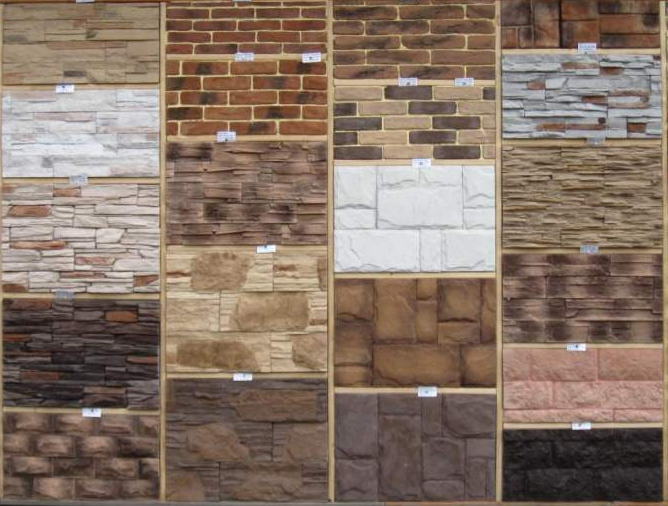
Of course, granite, marble, malachite and other types of stone sawn into layers look just great, its pattern soothes the eye and inspires peace and reliability that everyone would dream of decorating their own home with such material. In addition, it is quite easy to work with him, he practically does not split where it is not needed, does not lose appearance, and it looks expensive and luxurious. However, there are also some nuances that should be taken into account when choosing.
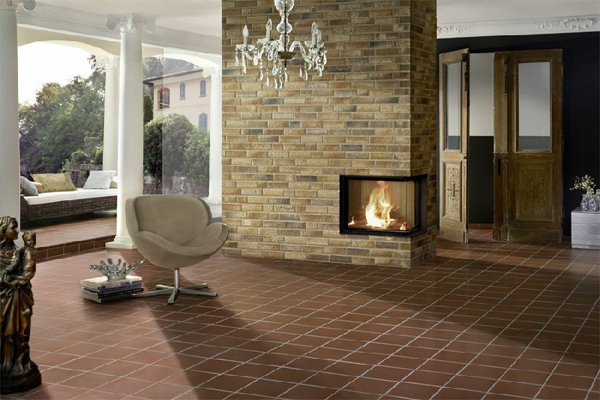
Firstly, such a natural stone really has a very high cost and not everyone can afford such a finish. In addition, the weight of this breed can be quite high, which is why it is not suitable for interior decoration. It will be more beneficial to look at the facades of buildings, where, by the way, most often you can see granite beautiful blocks, penetrated, like sunlight, with veins of quartz.
Information note
If we are not talking about porcelain stoneware, then it is better not to use artificial stone for flooring. The thing is that such a stone can be quite pliable, it can easily be rubbed in places of the greatest load, for example, at the door in the hallway.
True, you don’t really need to get upset, because you don’t have to spend all the money on wall decoration. You can not only make amazingly attractive and fashion renovation but also save. The fact is that stone-like ceramic tiles for interior decoration are several times cheaper, but they look exactly the same, well, or almost the same as natural stone. A non-professional will not even distinguish between a tile in front of him or sawn granite. Moreover, neither in terms of reliability, but in terms of durability, such a tile is practically not inferior to its natural counterpart. There are other advantages of such a finishing material, which does not hurt to appreciate it on merit.
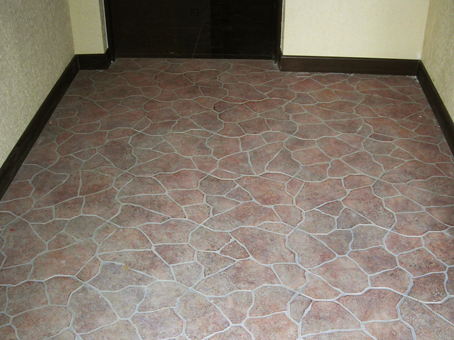
- Facing stone effect tiles for interior decoration are extremely easy to install and process. It can be easily cut to the desired, required size, and this is a definite plus.
- This amazing material is actually extremely practical and high quality.
- The tile under the stone is completely safe, both in itself, since it does not contain, nor does it emit aldehydes, and in terms of fire safety, electrical conductivity, and so on.
- An extremely rich selection of a wide variety of shades, textures and textures will allow you to create a simply unique and original interior.
- Enough low cost, especially when compared with natural stone, gives a wider range of possibilities for the flight of creative thought, not limited by price issues.
Decorative stone tile: dimensions, composition, options
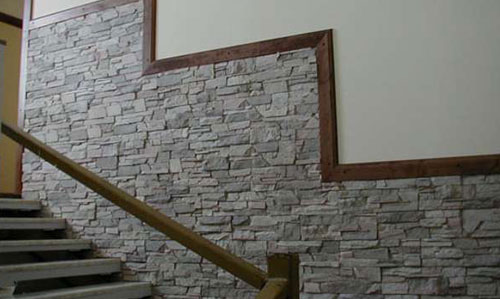
It should be understood that the modern market for finishing and facing materials is so vast that they are thoroughly versed in this issue only professionals and specialists of the highest class. However, the basic provisions and rules of choice should be taken into account immediately, for example, it is imperative to deal with the types and types of stone imitation that are now offered in any building supermarket.

- Concrete-based artificial stone is made from cement, ordinary quartz squeak, reinforcing elements, as well as a variety of fluxes, dyes, additives and plasticizers. Such a stone is the cheapest, most reliable and in demand.
- The second most popular option is porcelain stoneware, which has recently become widespread. It is made on the basis of clay, therefore it is quite light and easy to process. Such a stone is not afraid of either temperature or aggressive chemicals, with rare exceptions.
- Conglomerates, or, in other words, agglomerates, are an imitation of stone based on marble, or any other, natural rock chips. This finish can be quartz and acrylic, both of them are very durable, beautiful and can imitate a very large number of natural stone, for example, onyx, marble, malachite, granite, jasper and so on. Stone-look wall tiles for interior decoration of this kind are very stable, not affected by household chemicals, are very hard, but at the same time they can be easily processed with wood tools, for example, a carpenter's planer.
Wild stone effect tiles for interior decoration: original texture or smooth surface

Finishing with stone tiles can come in handy if you are going to create a completely unique interior at home, because there can be an incredible amount of such tiles, and you can really pick up something completely original. However, you should first figure out what the texture of your future walls will be, how they should look in order to become your real pride and highlight of the repair in the apartment or in the house for a long time.

- Firstly, it is worth deciding on the coloring, since the tiles for the walls under the stone may well be completely diverse.
- Moreover, some colors can be just right for smooth, glossy surfaces, for example, this can fully apply to noble marble and onyx, malachite and so on.
- An option such as sandstone, granite, or even jasper will look better without excessive processing, that is, those that have a “wild” rough surface.
- Volcanic stone, pebbles and other options will look best with a textured, uneven surface.
Stone effect tiles for interior decoration: the room matters
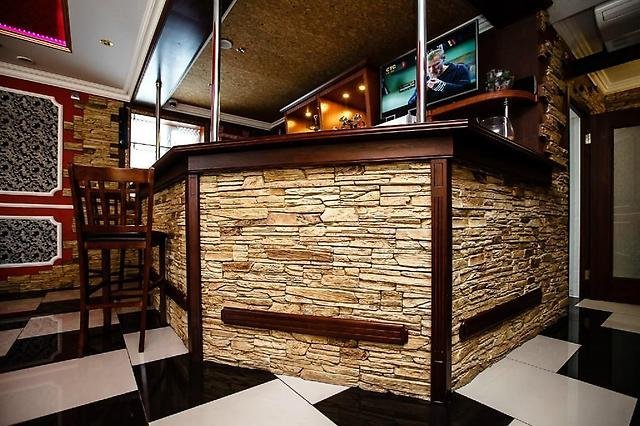
It is clear that stone-look tiling implies not only design solutions, but also a purely pragmatic approach. Finishing with such tiles is not for one, and not even for five years. This implies long-term plans, since this material costs far from a penny, although compared to natural stone, it will be much more advantageous in terms of price. True, it is the design that will become an indicator of your taste, and artificial stone tiles for interior decoration can become a real pride of the owner of a house or apartment.

- Glossy surfaces artificial stone will become more suitable for floor and wall coverings that will have to be washed frequently, for example, in the kitchen, bathroom, pantry, hallway and so on.
- You should not choose excessively dark shades for small rooms, as this can visually hide the space.
- A glossy, shiny and bright surface can cast glare, which can really be tiring for the eyes, so pay attention to how the stone looks in artificial lighting.
- In places with high traffic, you should not lay tiles under the stone wall on the floor, and indeed, you should not make such replacements. For the floor, you need to use only materials specially designed for this, otherwise they will very quickly become unusable.
- Floor coverings, if they are suitable in color and style, can, of course, be used for wall decoration, it definitely won’t hurt.
Natural stone tiles for interior decoration: simple design solutions for every home
![]()
You should definitely understand that there are certain rules that professional interior designers know by heart. Moreover, it is impossible to violate these rules so that the room looks truly luxurious and stylish. In fact, natural stone tiles for interior decoration can become not an ornament, but a complete collapse, and this should never be allowed.
Worth remembering
Like it or not, if you decide to decorate the walls in any of the rooms with artificial stone, or tiles with a similar texture and color, then you need to think about lighting. Moreover, it should be much brighter, otherwise the room may look like a crypt, and no one wants to live in the basement. Therefore, pay attention to ensuring that as much light as possible from the street gets into the room, and also that there are enough lighting fixtures.

As soon as it comes to decorating a room with artificial stone, a strong association with a fireplace immediately arises, as well as a rough wooden furniture. Rooms decorated in this style look really luxurious, such decoration will suit both country style and fashionable Provence. Please note that the room can be completely finished with stone, or you can only make accents, for example, near the fireplace, and so on.
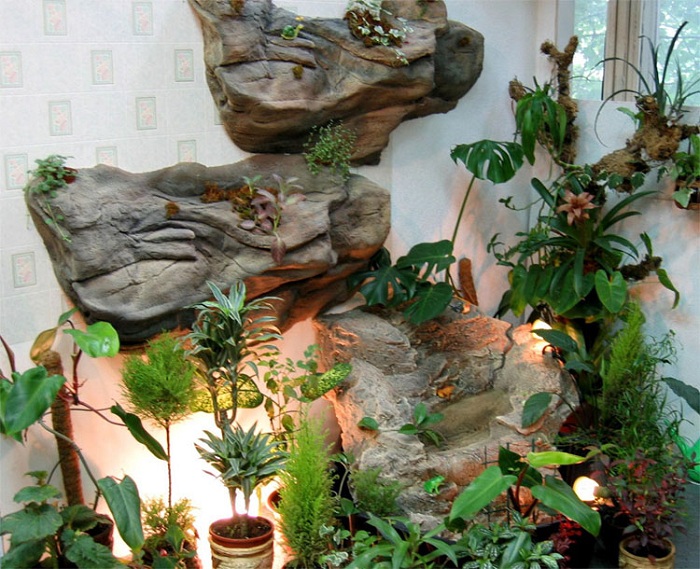
It should also be borne in mind that stone-look tiles for interior decoration, photos of some interiors are very interesting illustrations of this, perfect for a “living corner” in your home. This does not mean at all that you need to start a whole household in the apartment, not at all. This kind of finish looks great in the green area, where you can install pots and tubs with live plants, for finishing aquariums and more.
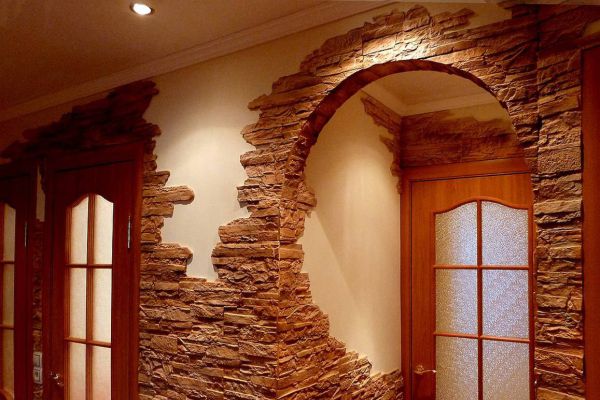
You can also diversify the room in a very original way, if you trim window and doorways with artificial stone, which will greatly enliven the room, make it more stylish. The main thing here is not to make a mistake with the texture and color, so that everything is in maximum harmony with the rest of the design.
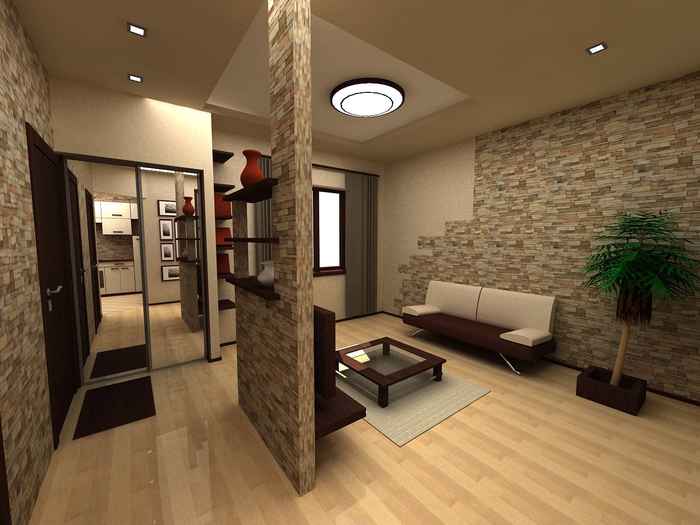
Please note that if the room is narrow and long, then it is worth laying the stone with tiles vertically and vice versa. That is, to make the ceilings higher, lay it vertically, and if longer, then horizontally, just like with a simple tile.

Natural stone, as well as its artificial counterparts, are perfectly combined even with high-tech style and extremely popular minimalism. For example, stone-look tiles, made in the form of small decorative bricks, often skillfully aged, will become best solution not only for hallways, but even for living rooms. Some even manage to paint such bricks with whitewash, surprisingly, such a finish looks simply incredibly attractive.
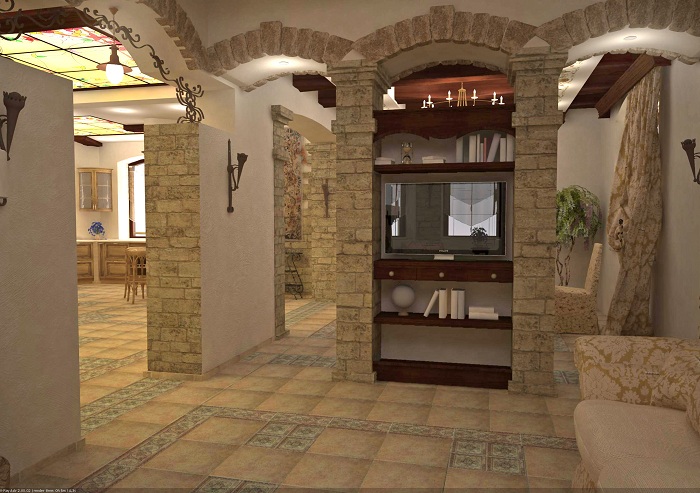
It is not at all necessary to lay the stone on the entire surface of the wall, as we have already said. You can highlight in this way only one wall, or part of it, which can also emphasize the beautiful texture of the material, thereby focusing on it.

Vintage finishes are just the thing that will harmonize with artificial stone in the best possible way. This is how you can make a room unique, simply breathing antiquity, but at the same time, reliability and style.
![]()
Do not think that decorative stone-like tiles for interior decoration will look rough and ugly. The main thing here is not to overdo it. Of course, if you are going to arrange an alchemist's dwelling or a hobbit's dwelling at home, then you can completely stone the walls and ceiling. But if your goal is different, you should combine this material with others, for example, with painted walls, natural wood, textured wallpaper and more. Moreover, there can be just a huge number of options, turn on your imagination, and if your own imagination is not enough, attract a professional, and he definitely won’t advise bad.
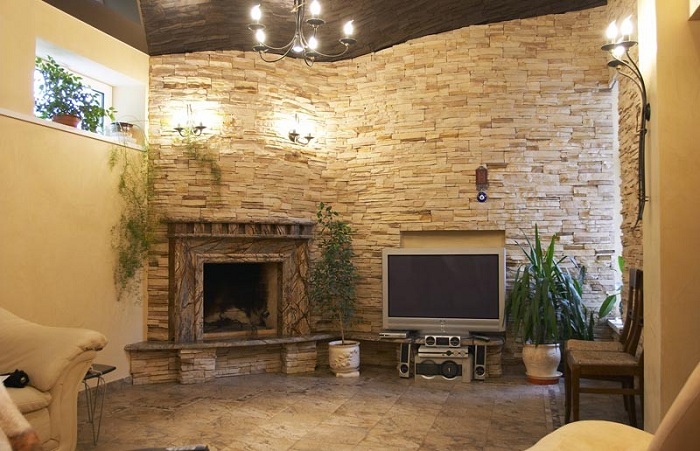
The coziness and comfort of the room are indicators that directly depend on how and with what materials it was finished. Along with a huge range of materials on the modern construction market, stone effect tiles for interior decoration are very popular.
In the photo - an example of finishing with stone slabs
AT modern interiors with a similar cladding, tiles of the following types are used:
- decorative;
- Ceramic;
- Created from natural stone.
Finishing material from natural breed
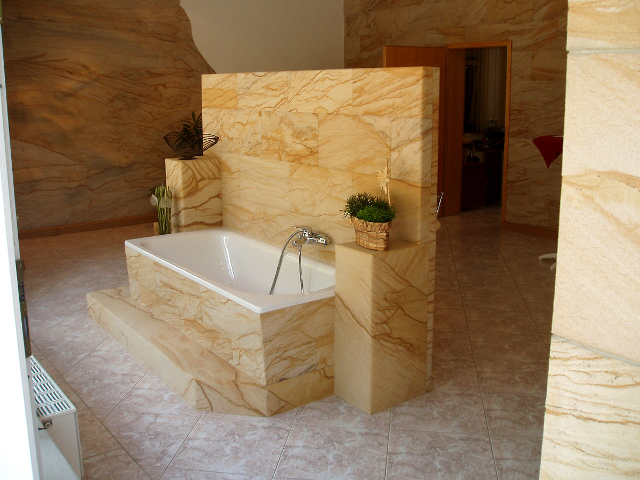
Wild stone tile for interior decoration, made from agglomerate, is distinguished by its excellent performance parameters: strength and durability. The surface of such elements does not absorb dirt, and if it does get dirty, it will be enough to rinse it with a damp cloth ().
Modern manufacturers endow this type of product with the following types of surfaces:
- porous;
- Matte;
- glossy;
- convex;
- Embossed;
- Glazed.
Note! The type of surface directly depends on the variety of the tile itself, which is created from fragments of natural stone.
The material for creating such facing elements can be: marble, basalt, onyx, granite and sandstone.
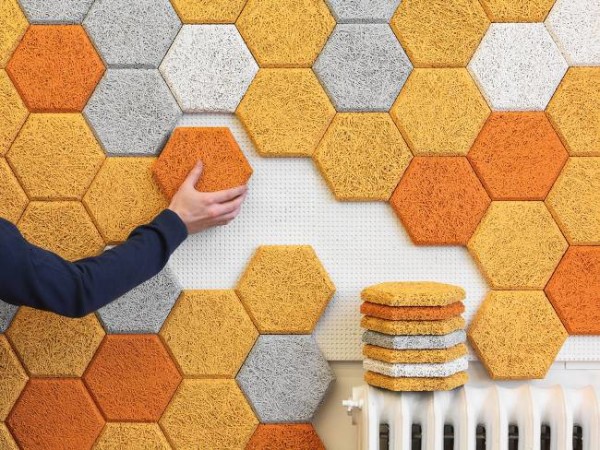
Features and properties of the material
Agglomerate tiles have the following characteristics:
- Weight. Facing, created from natural stone, has a lot of weight. If you plan to finish a large area, then before starting work, you should take care of strengthening the surface. If floor cladding is planned, then reinforcement is not required;
- Price. The cost of cladding created from stone is quite high due to environmental safety natural agglomerate;
- Dimensions. The parameters of elements from different raw materials may be different, but, as a rule, the thickness is not less than 5 mm.
Advice. When working with stone tiles, you should be extremely careful, because the material is quite fragile.
Preliminary work
In order to create the highest quality lined surface, the following instructions for pre-treatment must be observed:
- The surface of the cladding elements on the wrong side is even, which means that the wall should be as even as possible. For leveling, the method of sheathing with gypsum boards or the plastering method can be applied;
Note! Drywall should only be used if the weight of the facing material is not too high.
- The most commonly used method is plastering, which will require finishing and starting plasters;
- The starting solution is applied in two layers, between which a reinforcing mesh is placed, which acts as an amplifier. The dried starting plaster is sanded;
- The final stage of preparation is the application of a thin layer of the top coat, which, after drying, is processed with sandpaper.
Leveling work is quite simple and familiar to anyone who has ever done repairs.
Mounting
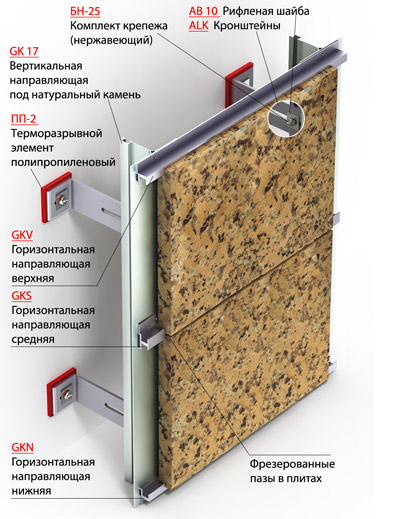
All cladding work is quite simple and can be done by hand without the help of professionals.
The process steps are as follows:
- Preparation of a mortar from water, cement and sand; specialized glue can also be used instead of a mortar if the size of the elements is not too large;
- We apply the solution on the walls and on the wrong side of the tile, after which we fix it on the surface. Laying is carried out from the bottom up, observing the same distance between the elements;
- The seams are masked with decorative putty, or cement mortar with the addition of coloring pigments of the desired color.
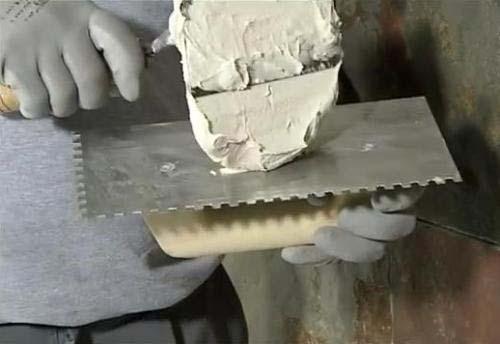
Advice. In order for the distance between the tiles to be the same, cross-shaped or rubberized beacons should be used.
Decorative tiles
Tiles for decorative stone for interior decoration may well be made of artificial conglomerate. Such elements look like natural ones and have almost the same set of properties and characteristics.
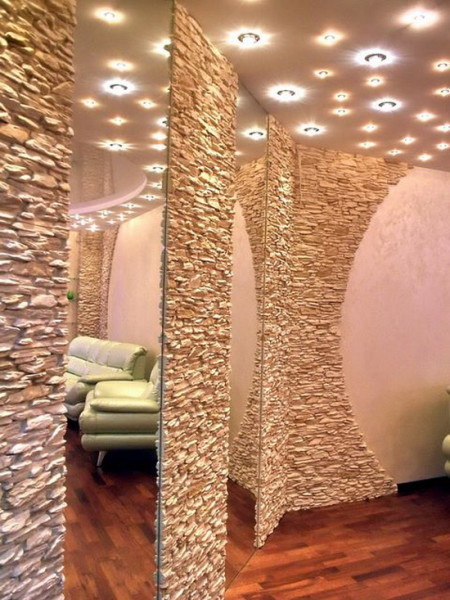
In the photo - the interior, made using decorative material
Properties and features
Decorative facing material features:
- Huge range of colors, shades and textures;
- Practicality and inability to absorb pollutants;
- Resistance to moisture and low temperatures;
- Amazing strength;
- Resistant to temperature extremes that undergo without deformation.
Note! This product is mainly chosen for finishing rooms with aggressive environments, kitchens, with its temperature fluctuations, bathrooms, with its constantly high humidity, etc.
The manufacture of such a decorative material is carried out from acrylics and synthetic substances with the addition of stone chips.
In today's market decorative trim can be endowed with the following types of surfaces:
- Matte;
- glossy;
- convex;
- concave;
- porous;
- Torn.
All of these surfaces have protective layer, with the only difference that the glossy versions are treated with a protective substance with a gloss effect, and the rest with a substance that does not shine after drying.
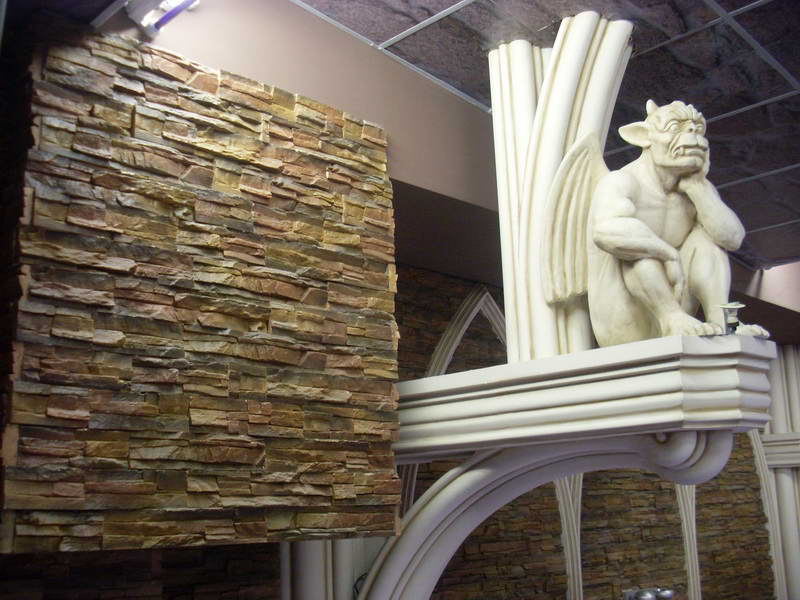
Surface preparation
As with natural stone tiles, walls must be prepared and leveled with plaster or drywall construction. Decorative cladding is quite light, so, without a doubt, you can choose plasterboard sheathing.
But if you still decide to plaster, then you do not need to strengthen the surface, which means that you will not need a reinforcing mesh. Next, apply a primer to the walls and allow the surface to dry.
Facing
During the cladding process, the following instructions must be observed:
- A cement or adhesive mortar is being prepared;
- Mounting on the walls is carried out in the direction from the bottom up;
- The seams are treated with putty.
Stone-look ceramics
Ceramic tile for artificial stone for interior decoration has excellent performance parameters.

Material properties
Facing ceramic elements demonstrate the following properties:
- Strength;
- Durability;
- Practicality;
- moisture resistance;
- Frost resistance;
- Thermal stability;
- aesthetic appeal.
The installation process for such material is similar. Moreover, ceramic elements can be faced with brick, concrete, plasterboard and other surfaces.
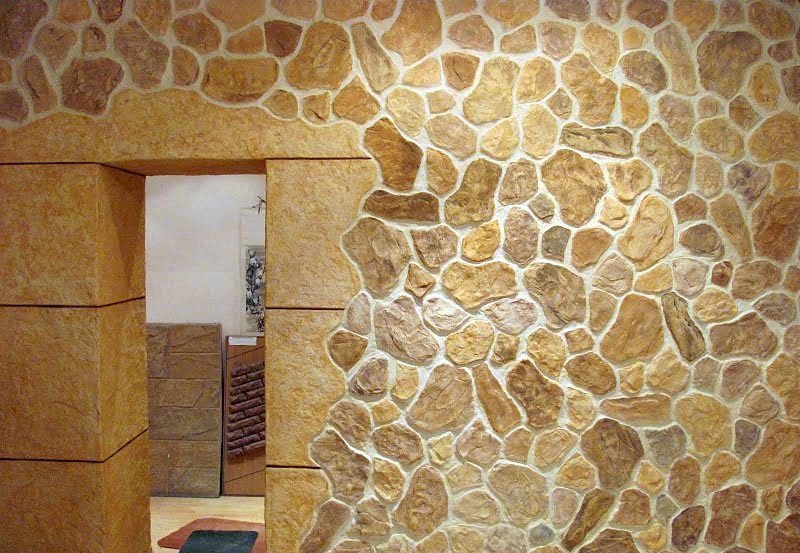
Stone-look interior tiles are a great opportunity to create an unusually beautiful, bright and simply chic interior in your own home. Such elements can be used to decorate any surface, and will always have a beautiful appearance.
Even the smallest detail, decorated with such tiles, will already bring a special atmosphere to the interior. And the fireplace area, decorated in this way, will become the center of warmth and comfort of the whole house.

This material makes it even more attractive to install it with your own hands, which allows each owner to show their own talent, creating amazing design elements from stone-like cladding ().
But the video in this article will help you find out even more necessary information on how to handle stone tiles.
Finishing work inside helps to create an atmosphere of coziness and comfort in the room. Along with large quantity materials, stone-like facing tiles for interior decoration are very popular.
There are a variety of photos with a stone finish, for this tiles are used from:
- natural stone.
- Ceramic tiles.
Note. According to their technical properties and characteristics, in some respects, materials of these types have similarities, and somewhere they have distinctive features.
Stone effect tiles for interior decoration made of natural agglomerate are distinguished by their original design.
She is:
- Very durable.
- Practical.
- Reliable.
- Durable.
- The surface of this material cannot absorb a variety of dirt and moisture.
- It cleans up pretty well with a damp cloth.
The surface of the tile can be:
- Glossy.
- Matte.
- Embossed.
- convex.
- porous.
- glazed and so on.
Note. This indicator depends on the type of natural stone tiles.
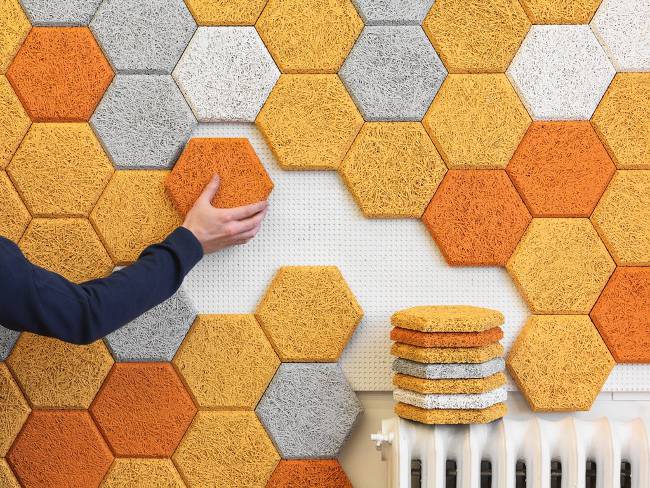
On the this moment used as a tile finishing material:
- Marble.
- Sandstone.
- Granite.
- Onyx.
- Basalt.
Features and Specifications:
- Each of these materials has its own dimensions and thickness. As a rule, the thickness can be at least 5 mm.
These natural agglomerate tiles are used on wall surfaces and must be handled with extreme care, as the material is quite fragile. - The price of tiles from is very high, since natural agglomerate is an environmentally friendly material. It is extracted from rocks.
After that, it goes through a very long process of processing and research on radioactive emissions. - Natural stone tiles are heavy. If it is of considerable mass and large size, then before installing such material it is worth strengthening the surface.
For this, a reinforcing wire mesh is used. It is mounted with a layer of plaster on the surface.
Advice. Such actions should be performed if the tile is mounted on the wall. For the use of natural tiles on the floor surface, no reinforcement is required, since the material will be in a horizontal position under its own weight.
Installation of natural stone tiles

In order to carry out the installation of such a quality, it is worth thoroughly preparing the surface for such work. It will not be difficult to complete the whole process, and you can do it yourself.
Preparatory work - surface leveling:
- Since the surface of the tile back side very flat, then the surface on which it will be mounted must also be leveled. For this, plaster or drywall is used.
Advice. Drywall is used to level the surface if the weight of the material is not too large.
- In most cases, plaster is used to level the surface. There are two types: start and finish.
- The names of the plaster speak for themselves. First, a starting plaster is applied to the surface.
Its first layer is applied and a reinforcing mesh is fixed on it to strengthen the surface. The number of layers of starting plaster depends on surface defects.
Each layer after complete drying is processed with sandpaper. - The use of finishing plaster is the final stage of leveling work. Its layers should be thin, since the main task of the finishing layer is to hide the defects of the first starting layers.
It should also be sandpapered after dry. The video shows the process of working with plaster on the surface.
To apply plaster you will need:
- Container for mixing plaster mortar.
- The construction mixer for giving to solution of homogeneous mass.
- Level.
- Spatula (large and smaller).
- Sandpaper (with large and small cells).
Work on leveling the surface with plaster is quite simple.
The process of installing natural stone tiles

All works are very easy, they are produced without specialized assistance, just watch the video.
For them you will need:
- cement mortar.
- Level.
- Tile cutter.
- spatula.
Stages:
- Cement mortar is made independently from water, sand and cement.
Advice. In the cement mortar, it is worth using cement (400), which has excellent strength after hardening.
- Instead of cement mortar, a special glue is also used. But its use is possible only if the weight and size of natural stone tiles are not too large.
- The solution is applied to the surface and inside tiles from natural agglomerate. After that, the material is fixed on the surface.
Advice. The laying of such tiles must be carried out in stages in order to ensure sufficient strength for each element.
- To mount the tile, you need to start from the bottom of the surface and gradually rise up. The same distance between the trim elements is achieved by using cross-shaped or rubberized beacons that are inserted between each trim element.
You can not use them, but lay tiles made of natural stone closely.
To mask the seams, it is worth using decorative putties. And it is best to add coloring pigments of the desired shade to the cement mortar.
Decorative stone tiles
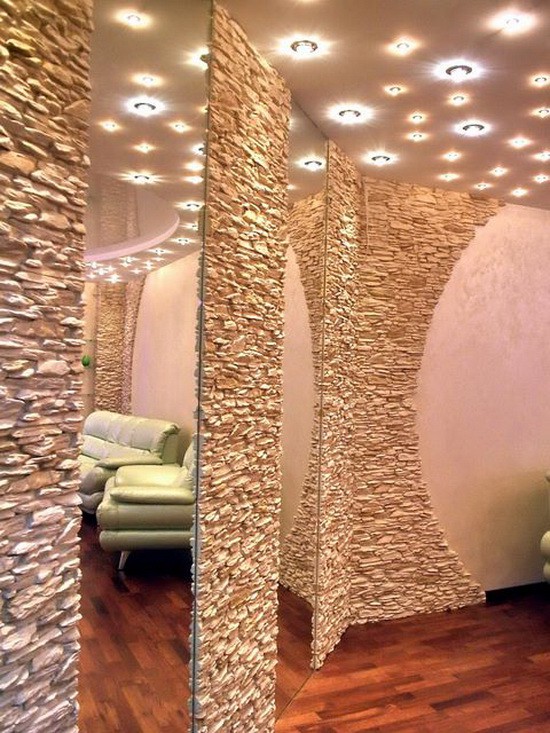
Natural stone tiles for interior decoration can be made from an artificial conglomerate. It looks similar to natural stone tiles and has almost the same properties and characteristics.
Decorative stone tiles:
- It has a wide range of designs and colors.
- It is practical and does not absorb dirt.
- Frost and moisture resistant.
- Durable.
- Also, the tile can withstand significant temperature changes and does not deform.
Advice. Such finishing material it is used for finishing rooms that have high air humidity and sudden temperature changes (kitchen and dining areas, and so on).
Very often a slab of decorative stone used for and wall surfaces. Do not use this material on the floor, as it is quite fragile and under the influence heavy weight may begin to deform.

Decorative tiles have the following types of surfaces:
- Matte.
- Glossy.
- Porous.
- Convex.
- Concave.
- Torn.
Note.
The glossy surface is protected by a layer of a special protective agent. All other surfaces are also treated with a substance that does not have a gloss after drying.
Decorative stone tiles are made from:
- acrylic.
- Synthetic substance.
- With the use of natural crumb stones (marble, granite, and so on).
Installation:
- Mounting this type of material is very simple, but the surface is pre-leveled and cleaned. Be sure to treat it with a soil solution after such work.
- Surface leveling can take place using plaster or drywall. Since decorative stone tiles are lightweight, drywall sheets can also be used.
It is not necessary to reinforce the surface for mounting the material. - Drywall is mounted on a profile metal carcass, which is attached to the surface with dowels. The remaining structural elements are connected with self-tapping screws.
The joints of such material are treated with putty and, after it dries, are leveled with sandpaper. It is worth considering that such a surface also needs to be primed.
To mount the frame you will need:
- Hacksaw for cutting the desired profile size.
- Level.
- Dowels and screws.
- Perforator and screwdriver.
Installation of tiles made of artificial stone, from the tools you need:
- Special glue or cement mortar.
- Tile cutter.
- Building level.
- spatula.
- For the preparation of special glue, ready-made dry mixtures of such a product are used. On their packaging there is an instruction, according to which a certain amount of water is added to the container.
- Everything is mixed with a construction mixer.
Advice. After the adhesive solution is ready, it must be allowed to infuse for several minutes.
For the installation of large decorative stone tiles, cement mortar is used.
Glue is applied to the wall and to the inner surface of the tile. Seams after completion of work are processed with decorative putty.
Stone-look ceramic tiles for interior decoration
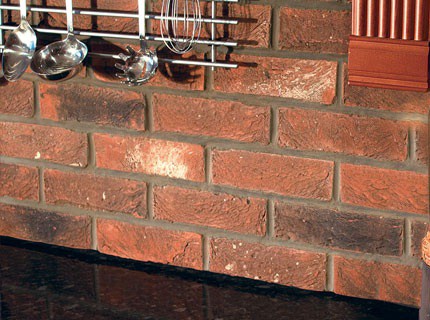
Ceramic tiles for stone effect interior decoration have excellent properties and their characteristics. It is strong and reliable, durable and practical.
Ceramic tiles have three types of surface:
- Matte.
- Glossy.
- Embossed (porous).
Note. You can clean the surface of ceramic tiles using any cleaning agent.
- The tile is moisture resistant and frost resistant.
- It is not able to deform under the influence of temperature changes, and does not fade from direct sunlight.
- Wild stone tile for indoor decoration has an attractive appearance and is mainly used for decorating walls in the hallway, fireplaces and so on.
Note. The material is mounted quite simply, the whole process of work is similar to the installation of decorative stone tiles.
You can attach the material to any surface:
- Concrete;
- Brick.
- Drywall and so on.
In case of visible defects on the surface, it is worth leveling it and priming it before installing decorative ceramic tiles. After installation, decorative putty of a certain shade is used to mask the seams.
